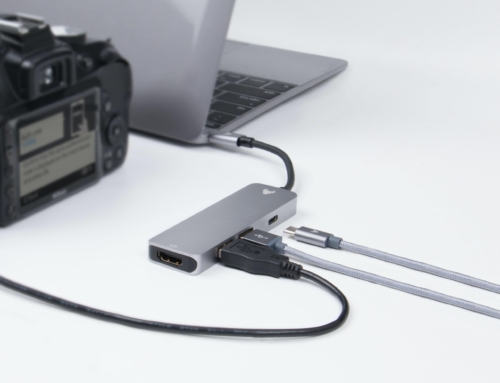Ransomware is the single flashiest type of cyberattack on the globe. It has hit big-name brands like hotel chains and hospitals all over the world, often targeting critical infrastructure. Ransomware is notorious for overtaking business systems and locking them up, then dramatically demanding ransom in some untraceable crypto-currency.
Today, open-sourced ransomware is being used against businesses of every size, including local restaurants, shops, and online-only brands. The question is: how do you protect yourself from ransomware, and how can you be best prepared if your business is ever hit by a ransomware attack? With a little technical expertise, anyone can build an anti-ransomware plan that can very effectively thwart a ransomware attack even after a system is compromised and a ransom is delivered.
What Exactly Is Ransomware?
Ransomware is any malicious software that accesses your systems and allows the bad actor to deliver a threat. Original ransomware would encrypt all your files, and threaten to only decrypt them if the ransom is paid. However, today ransomware doesn’t always achieve a full freeze-up, and ransomers sometimes threaten to expose stolen data instead of holding your operational capabilities hostage.
Fortunately, with the plan we are about to outline, you can quickly prevent and/or recover from both types of ransomware threats.
Essential Anti-Ransomware
- Encryption
- Backups
- Restoration
The three essentials of anti-ransomware planning are encryption, backups, and restoration. Encryption protects your files – even stolen files – from exposure. Backups and restoration allow you to reload your system before the infection occurs. However, for most business owners and managers, you will want to implement a more complete seven-step plan to prepare for ransomware, prevent ransomware infiltration, and create a swift recovery plan just in case ransomware gets through your defenses.
1) Remote Servers and VPNs
The first step is to obscure your servers and digital assets. Gone are the days when businesses need to keep all their servers and operations on local machines. One-copy local machines can be isolated and compromised. However, using remote servers through a cloud provider adds several layers of protection. First, your office computers are not directly exposed. Second, you can remake your infrastructure in the cloud at any time. Third, you benefit from the built-in cybersecurity of your chosen cloud server provider.
VPNs also allow you to route traffic through obscured sources, so it’s even more difficult for outside hackers to determine the exact IP address of your critical systems, and perhaps ensure that you reconnect with a different IP address every time.
2) End-to-End Encryption
The next step is end-to-end encryption. This means that your data is encrypted 100% of the time, including when it is used in apps or transmitted between servers and devices.
What encryption does is put your data into a cyber that only your decryption software knows. This means that if a ransomware hacker did get a hold of a server full of your most sensitive data – they wouldn’t be able to read it. Like stealing a paper written in Wingdings, without your specific encryption key (which they won’t have and can’t generate) threats to expose your data will be empty – leaving you free to wipe ransomware from your systems cleanly and ignore ransom demands.
3) Frequent and Comprehensive Backups
The next essential step is to take backups. First, take a full backup of your infrastructure: the servers you spin up, the software you install, and your customized configurations can all be taken in an “image” of your systems that can be reloaded as a fresh new cloud server installs at any time. When you change your infrastructure, take a new baseline backup.
After that, take routine backups of your baseline data – files and documents that are rarely accessed and will be unchanging from one month to the next.
Finally, take frequent – daily or weekly – backups of your live data. This way, if you have to “reload from save”, you won’t have lost much in the way of business or client information since your last live-data backup.

4) Anti-Phishing Training for the Whole Team
Teach your entire team how to watch out for phishing attempts. Phishing is when a suspicious email (or any other digital communication) is designed to trick an employee into clicking an infected link or accessing an infected website. They can be disguised as messages from coworkers, customers, vendors, friends, and family, or tempting deals. But there are usually signs that something is off.
Training your entire team to spot phishing is the best way to minimize the risk of clicking infected links. Pair with cloud documents to eliminate the need to click links. Get your IT team to hold phishing drills (send fake phishing emails) and bring cupcakes every time someone identifies a real or fake phishing attempt. This will keep everyone on their toes and having fun at the same time.
5) Robust Cybersecurity and Live Network Monitoring
Next, protect your network. Make sure your business is using a robust cybersecurity infrastructure with customized security settings, all the built-in security features turned on, and a comprehensive cybersecurity plan implemented by IT.
Top it off with live network monitoring. This allows you to build a baseline of what typical network activity looks like for your business and red-flag any unusual entry, resource use, or file manipulation that could be an infiltrated ransomware program at work.
6) Wipe-and-Restore Disaster Recovery Plan
Build and test your disaster plan that allows you to completely restore your servers and files after wiping everything to factory settings.
The best way to defeat ransomware after an attack has occurred is first to wipe everything. Ransomware can’t lurk in your network and operating systems if you reinstall everything to factory settings. Then use your comprehensive and recent backups to fully rebuild and get back online before the ransoming hacker realizes they’ve been thwarted.
Your end-to-end encryption also protects you from threats to reveal any data they managed to access during the infiltration.
7) Cybersecurity Insurance
Last but never least is cybersecurity insurance. In this constantly evolving landscape of cyber threats and cybersecurity, no plan is perfect. Cybersecurity insurance can reimburse you for hours and data lost to the backup restoration, and can also help you deal with the fallout should the hacker manage to do some damage or expose some files on their way through. This new type of insurance is designed to protect businesses of any size as the cost of cyber attacks can now be quantified.
Becoming an IT and Cybersecurity Pro
If this process sounds interesting to you, then you are probably destined for a tech career. All that stands between you is the training necessary to implement each stage of the process. For those who are interested in IT tasks, it will take less time than you realize to learn how to spin up servers, customize security settings, optimize encryption, and take essential backups. With Woz-U, you can start learning right away and jumpstart your path into a tech and cybersecurity career of defending businesses and fighting hackers.
Contact us today to explore the coursework and get started building the skills you need.





